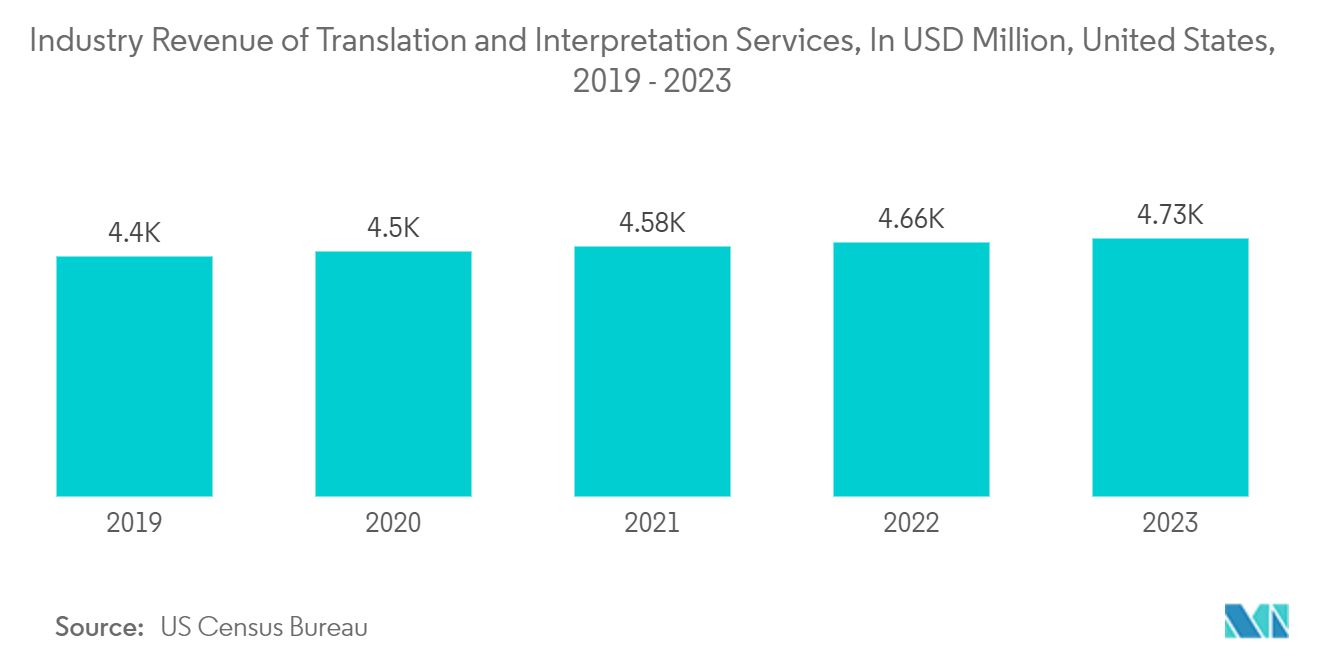Market Trends of Machine Translation Industry
Neural Machine Translation is Expected to Drive the Market Growth
- The emergence of neural machine translation (NMT) during the past several years has been among the most fascinating advancements in automated translation. The method predicts the likelihood of a set of words using massive amounts of data given into an artificial neural network, often modeling the complete sentence in a single integrated model. In other words, the model learns by doing in artificial translation intelligence.
- NMT is also constantly being enhanced and refined, and it's expected to improve over the coming several years. They are anticipated to be integrated with analytics and other industry-wide software solutions, allowing for natural language inquiries and machine responses, increasing the efficiency with which these solutions are used. Organizations may choose these solutions due to the significant cost savings associated with their adoption.
- To fulfill rising customer demands, businesses are putting more and more effort into creating cutting-edge machine translation systems. For instance, Amazon announced the release of Sockeye 3, the most recent version of its Sockeye toolkit, in July 2022. Sockeye 3 enables the rapid and practical training of neural machine translation (NMT) models. Compared to other PyTorch implementations, Sockeye 3 runs up to 292 percent faster on CPUs and 126 percent faster on GPUs.
- The Neural machine translation can translate thousands of user-generated comments much more quickly and accurately while producing findings that can be used. As a result, the businesses will be able to engage with clients globally more meaningfully, which is essential for a successful global marketing strategy.

North America to Hold Maximum Market Share
- Due to growing demand in the US IT sector, which accounts for most regional demand, One of the most prominent marketplaces for is in North America machine translation. To meet the needs of international consumers, some of the most well-known IT companies in the area were among the first to implement this technology.
- Various service providers and a supportive government characterised the region's expansion. For instance, the SMT services offered by Google Inc. and Microsoft Corporation and their free internet search engines have become more prevalent in the United States. Additionally, the machine translation market in North America is projected to grow due to the technological behemoths' increased investments in and advancements in machine learning and artificial intelligence.
- North America is home to the majority of the industry's major players, which is one of the important factors contributing to the high market share of the area. A few significant companies in North America have banded together to take advantage of the most recent technical advancements that can be implemented into their business models. Inventus has fully integrated automatic machine translation into its products for eDiscovery services. With the help of Inventus, Iconic Translation Machines Ltd., a well-known translation software provider, can now offer its most recent Neural Machine Translation solution on-premise or in the cloud.
- A few businesses in the area are focusing on technological development. For instance, Facebook invests much money in machine translation (MT). Facebook is currently working on two other projects that will share information with the greater open-source community and enable developers to improve the technology, in addition to increasing quality estimation and several other initiatives.


